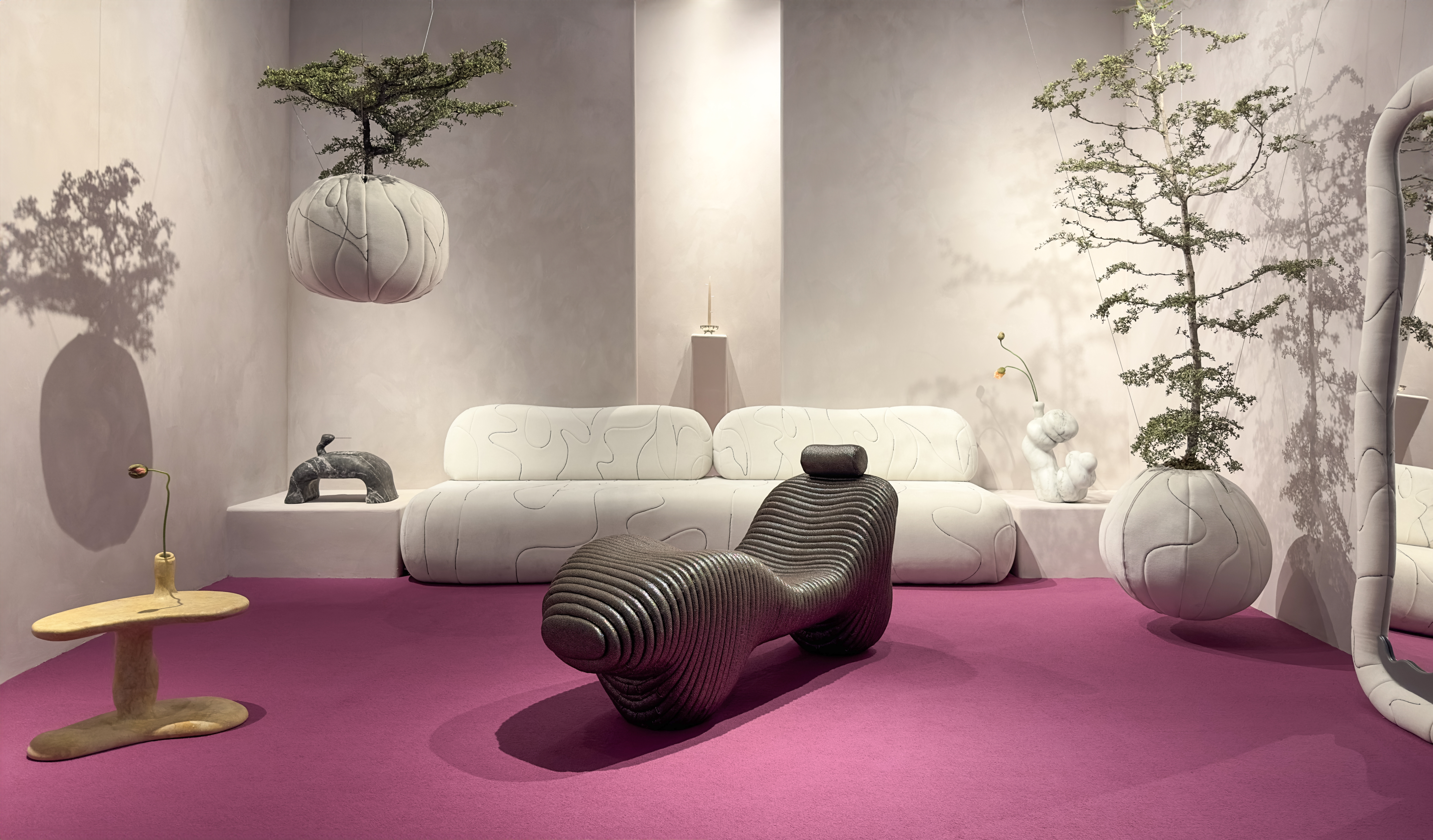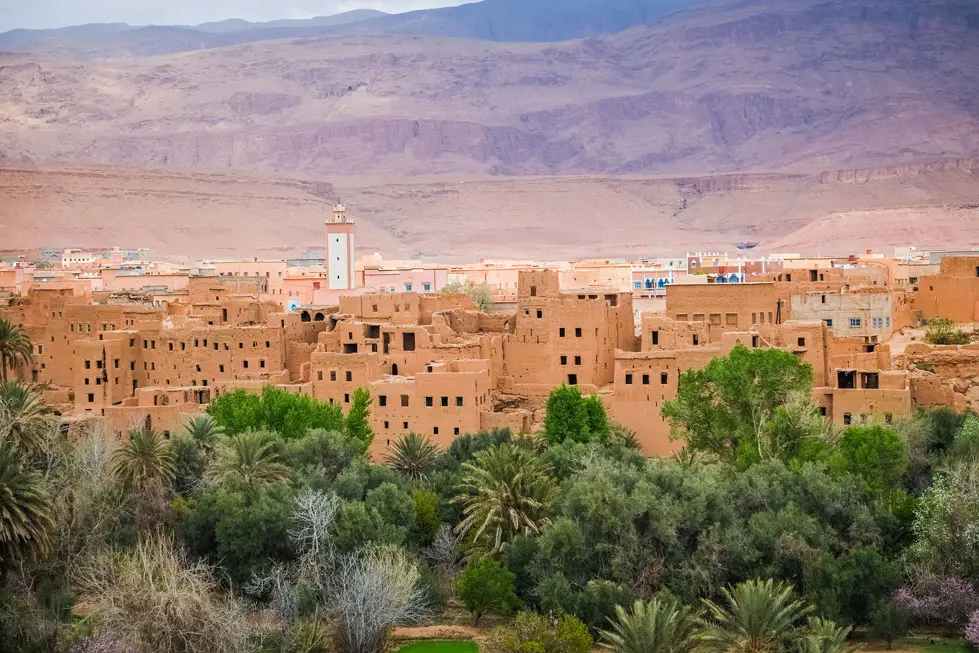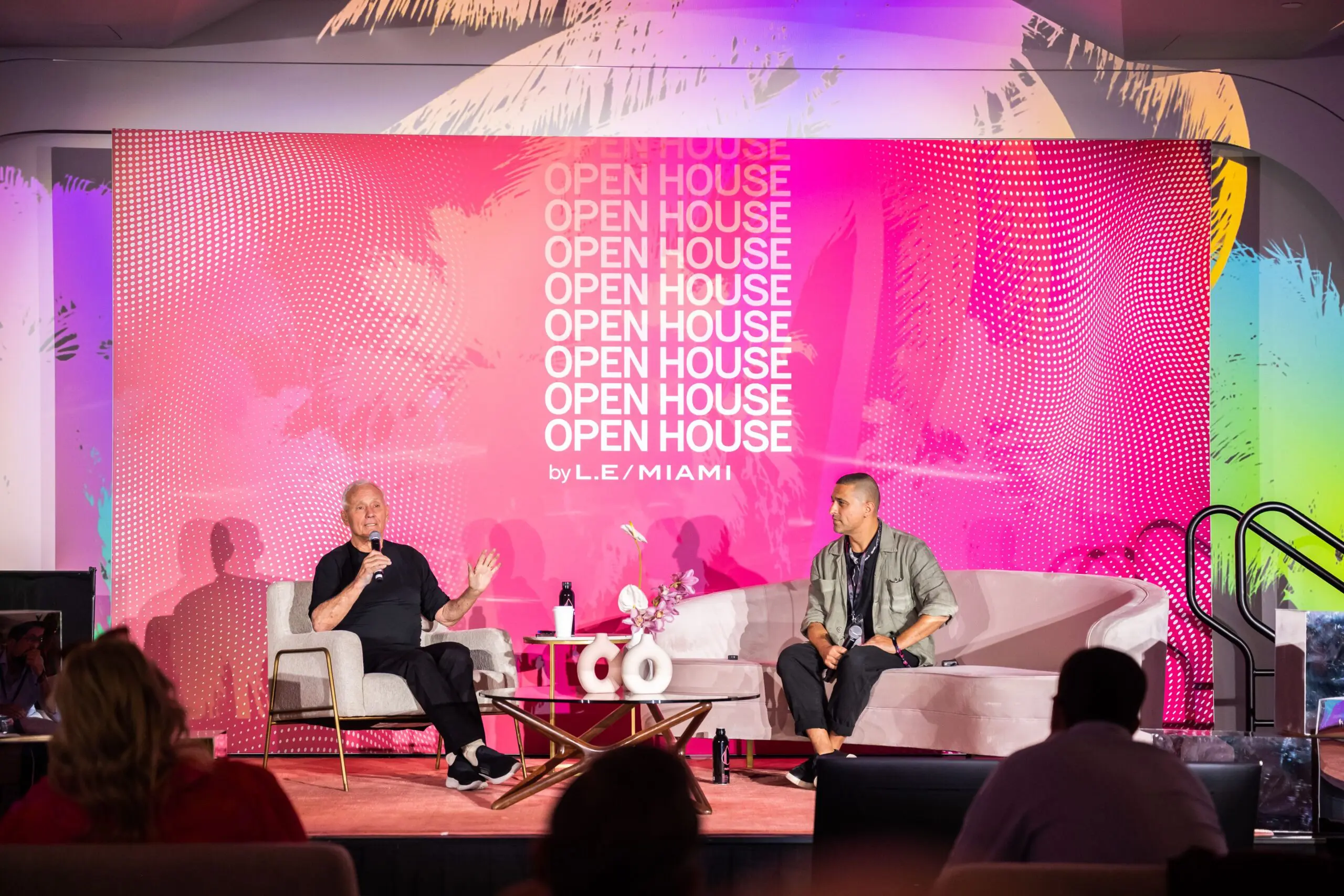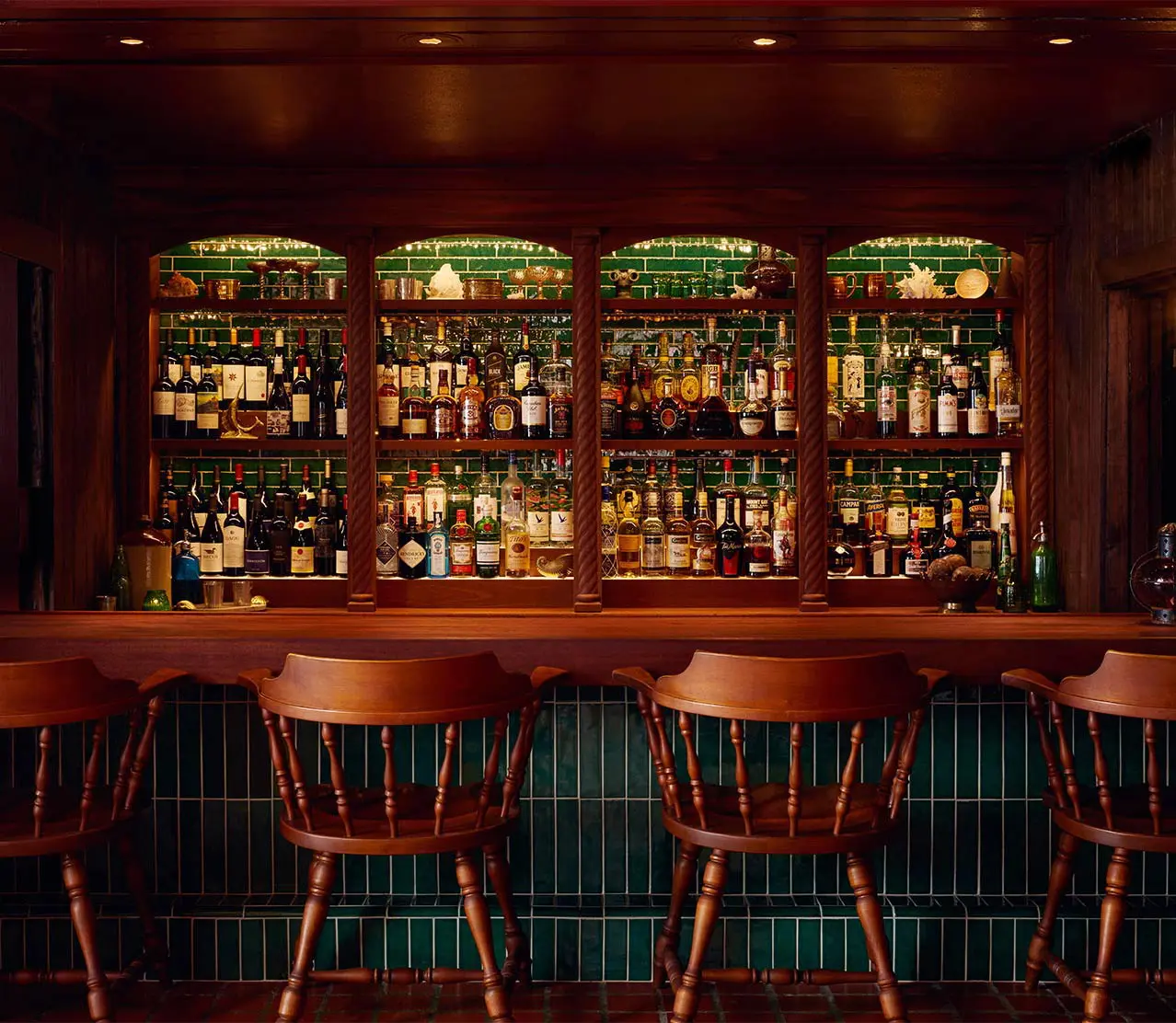We care about your privacy. We attempt to limit our use of cookies to those that help improve our site. By continuing to use this site, you agree to the use of cookies. To learn more about cookies see our Privacy Policy.
Art Basel Miami Beach with CROPP
Getting through one of the most hectic fairs of the years with a pair of experts
Sometimes the hardest part about art fairs is simply navigating through the sea of galleries and exhibits without getting completely burned out and overwhelmed, but for Paul Vinet and Pilar Zimmermann this is always a joy. That’s because the husband and wife duo have a deep passion for art—Vinet an art historian and advisor hailing from Paris, and Zimmermann an art director from Lima—which to our benefit, they choose to share. Through their company CROPP, they provide art advisory as well as guided experiences, and Art Basel Miami Beach was the perfect place to see for ourselves. Going through an art fair with Vinet and Zimmermann helps cut through the fluff, bringing guests directly to some of the most interesting, exciting, and challenging contemporary works. Like most artwork, it’s best for you to experience it yourself, so we did the next best thing: Zimmermann and Vinet brought their insights to some of their favorite works from Basel to A Hotel Life (as well as some of their insider haunts) to give you a taste of what a CROPP art walk would entail. From Basel to the Bass Museum, here are the highlights from the weekend, straight from two of the best guides themselves:
Art Basel Miami Beach

Favorite booth at Art Basel: Galeria Revolver, in the NOVA section, presenting a solo show by Peruvian artist Jose Carlos Martinat. “Martinat’s approach about appropriation involves the extraction of elements from the streets -peeling-off pintas políticas, which is re-contextualized afterward, to comment on the different uses of public space and political stories of certain places.” This piece reads: “Try to cross and cross” and was taken at the Mexico border.
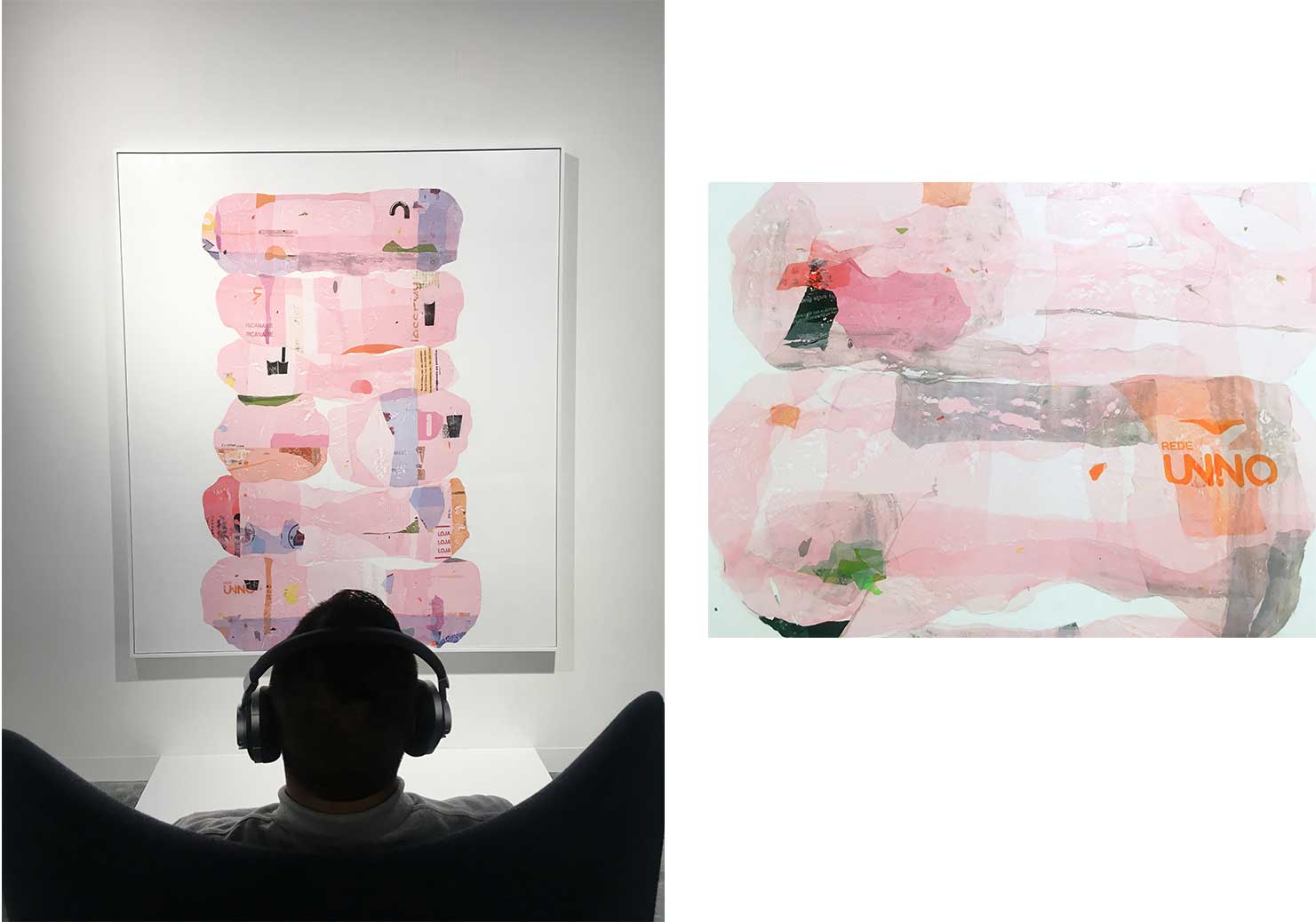
Best idea: As part of their Collect Wisely initiative, Sean Kelly Gallery provides an opportunity for visitors to stop and sit in front of an artwork and listen to one minute audio of the artist talking about his work. Shown here an extraordinary piece made with plastic bags by New York-based artist Hugo Mc Cloud, a former industrial designer, who finds beauty in common materials.
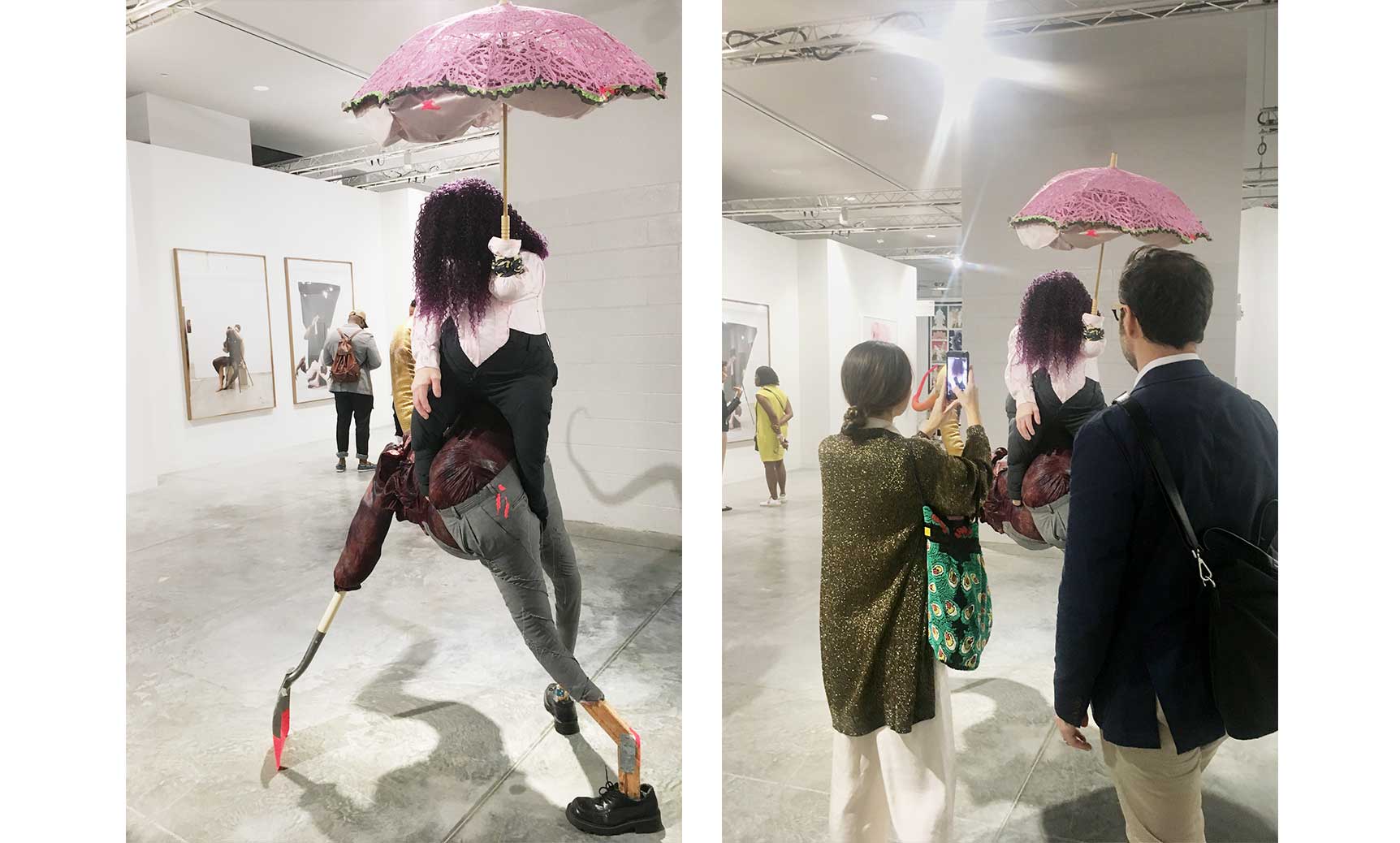
Favorite new discovery: Simphiwe Ndzube, (at Stevenson Gallery) the Bhabharosi series. The term stems from the words “Barbarous” and “Rose,” combined and pronounced in isiXhosa, his native language. A Bhabharosi is one who embodies elements of beauty and hardship, one who has been rejected, disjointed, disfigured, and discarded after being used for his labor. He finds refuge and diversion by defiantly embodying sartorial elements of the Swenkas, the working-class Zulu men who participate in amateur competitions that are part fashion show and part choreography, the purpose of which is to display one’s style and sense of attitude.
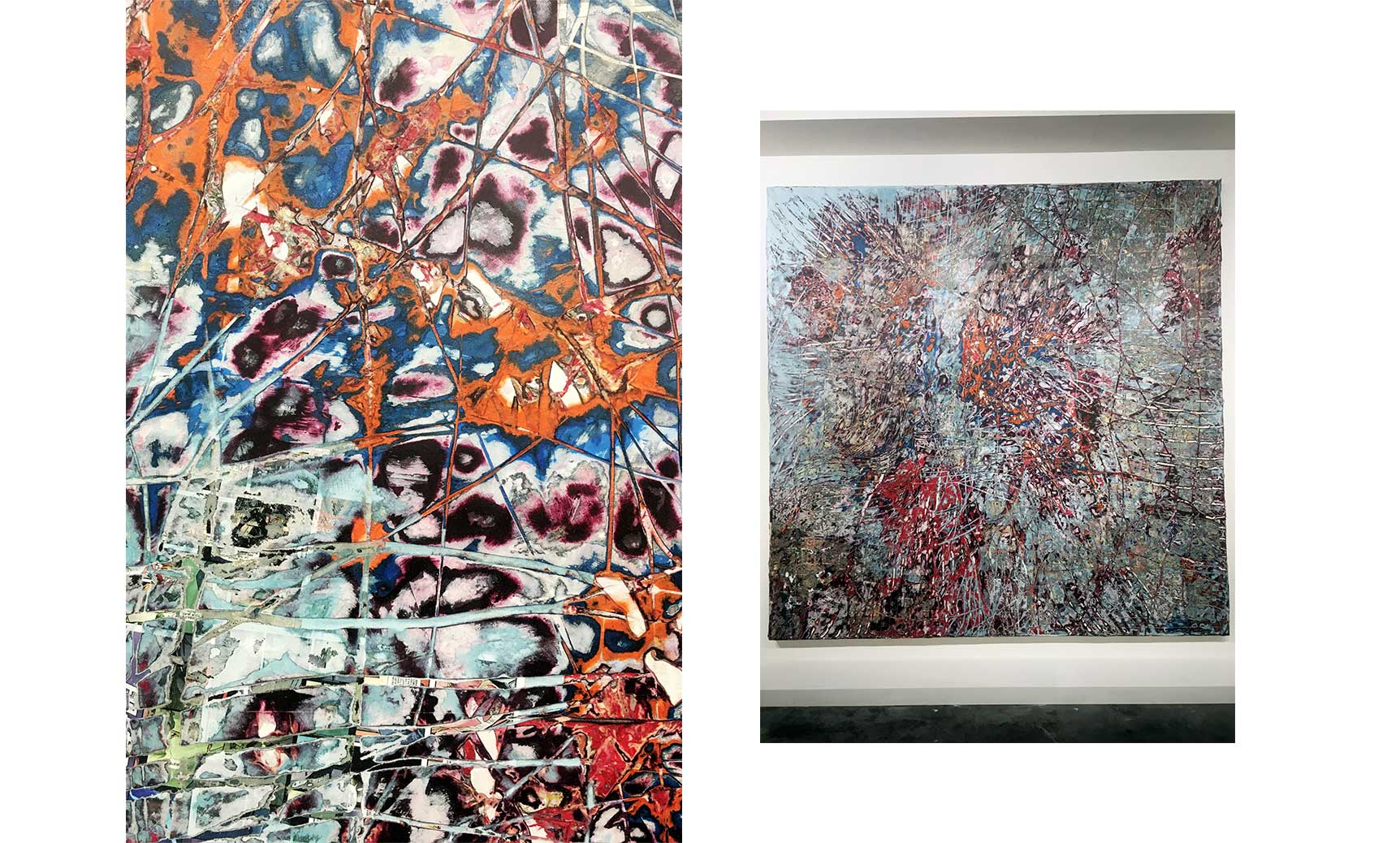
Favorite abstract from an established artist: Mark Bradford’s (at Hauser and Wirth Gallery) mixed-media collages made with segments of billboards, flyers, and graffitied stencils. His works marry his interests in modernist abstraction with the urban community from which he culls his materials.He creates his work by sanding, peeling, stripping, and cutting away to create a vivid and textured composition. It reveals the history of the process.
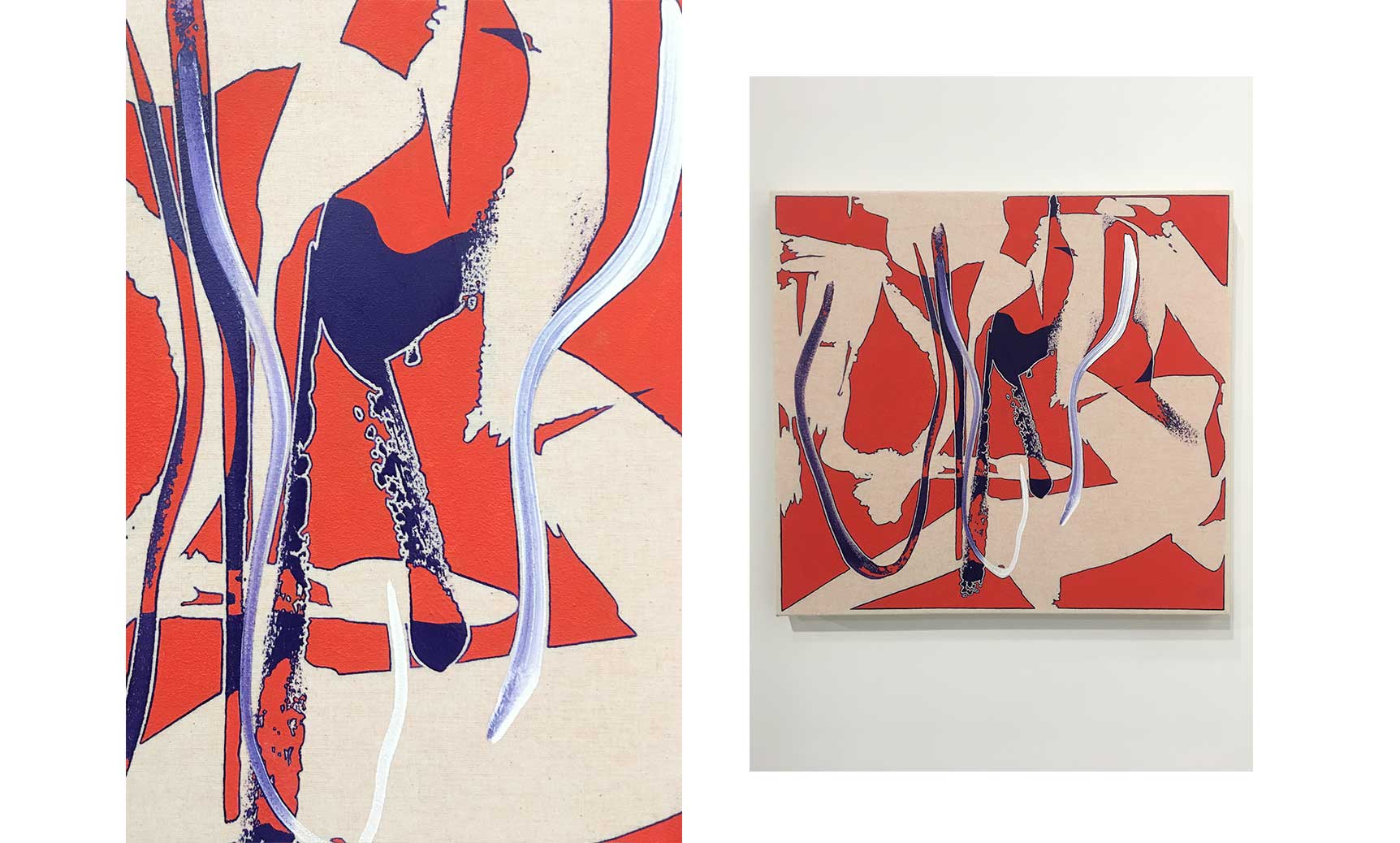
Favorite abstract from an emerging artist: Zak Prekop (at Essex St Gallery) his style has an undeniably contemporary feel, all while employing formalist elements that abstractionists have been using for more than a century. He has a casual, off-hand aesthetic from a distance. On closer look, it displays intricate twists and turns of monochromatic paint, with each crisp line precisely rendered. Although Prekop’s endeavor may seem half-hearted and tentative, he elegantly captures the uncertainty and disappointment of his generation.
This is the perfect example of a painting that needs to be seen in person.
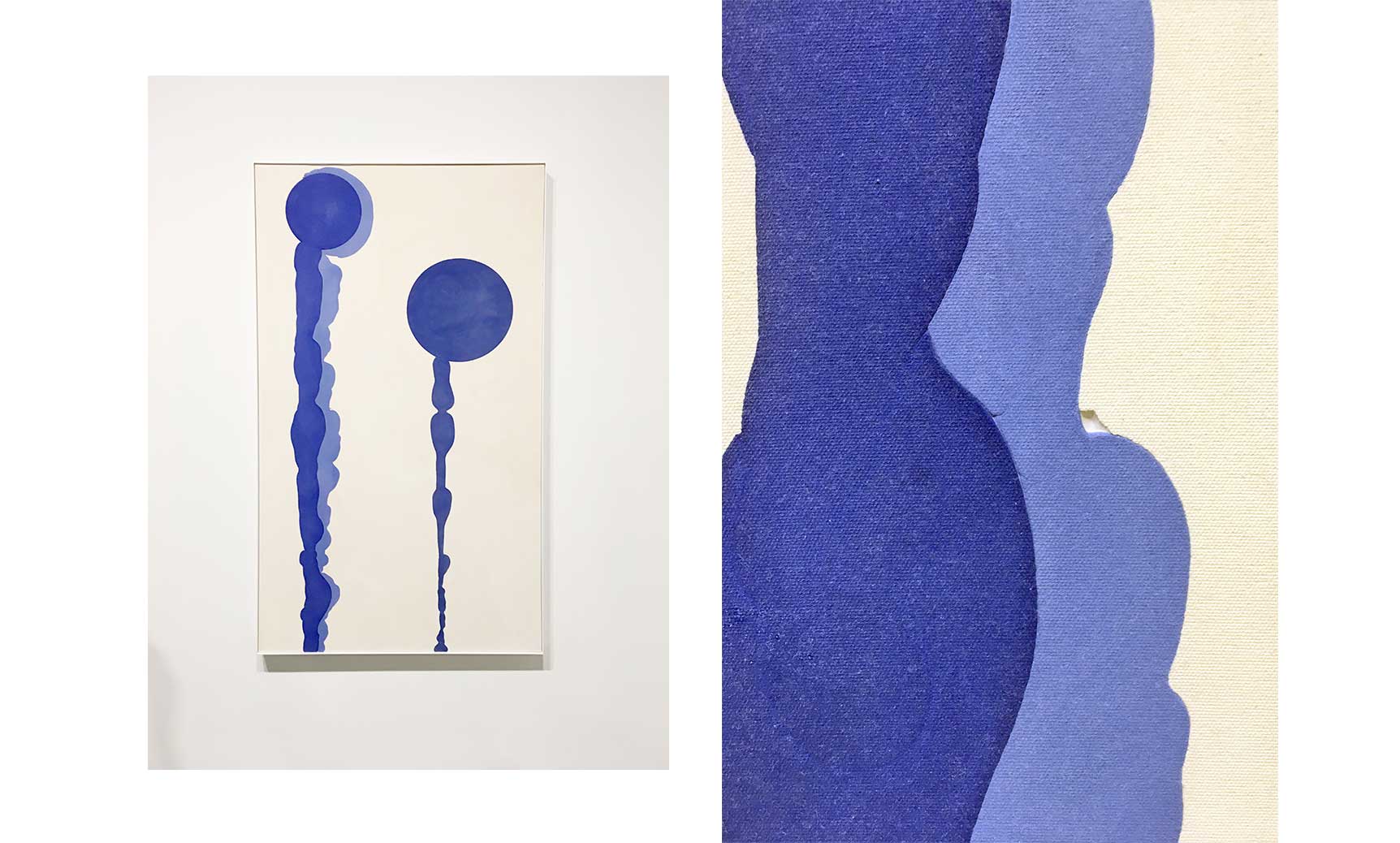
New Technique: Painting or sculpture (or both?) Anthony Pearson (at Marianne Boesky Gallery) arises questions of perception with this new body of work. For this series, he stretches a segment of fabric within a mold and then pours the liquid cement, which he has variously colored, atop the fabric, layering, shifting, and allowing it to coalesce organically within the confines of the supports. Once the material sets, Pearson removes the hardened cement from the frame and pulls the canvas from its face, which leaves intricate patterned impressions and traces of fiber filament on the surface plane.
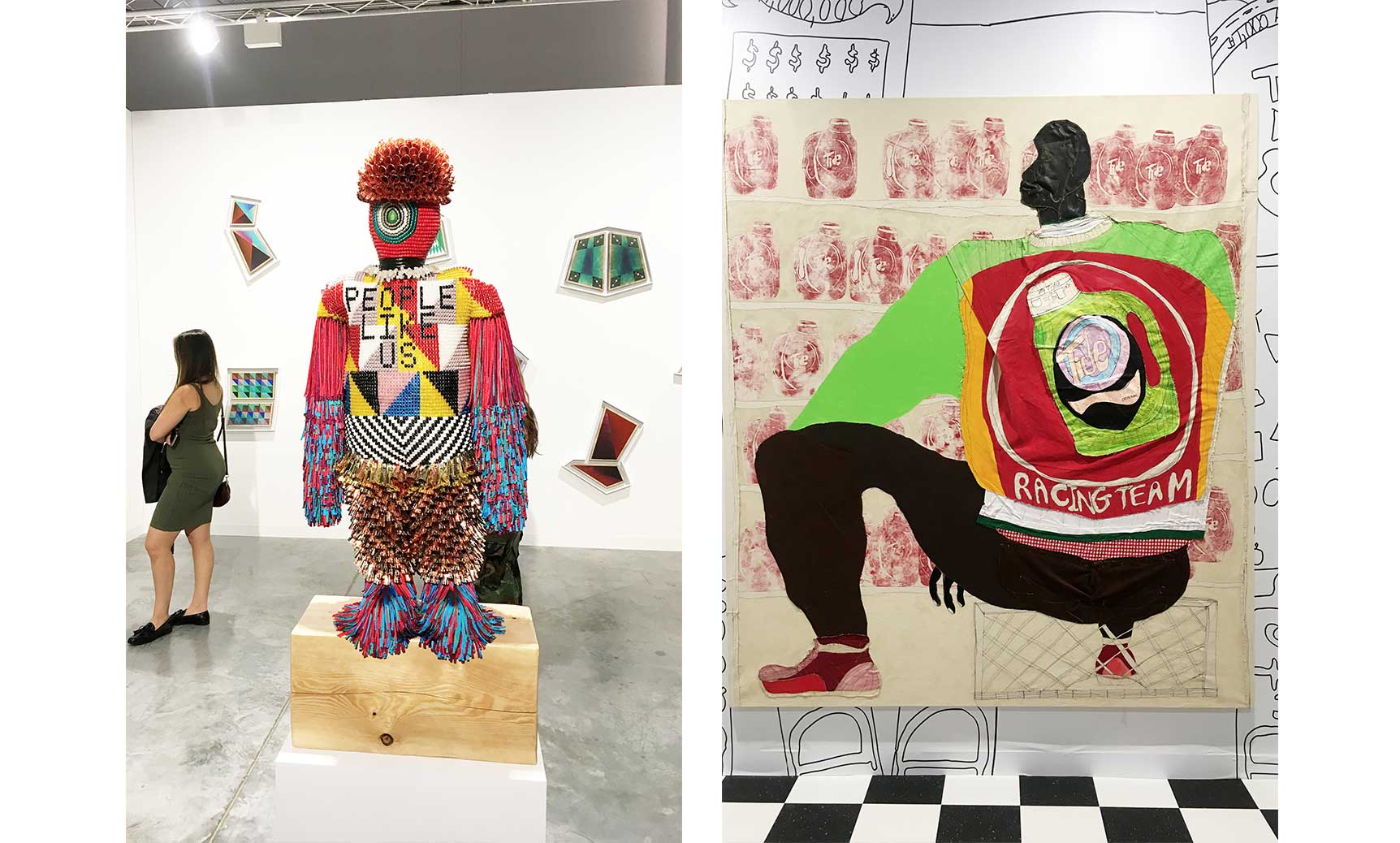
Cultural diversity: People like us by Jeffrey Gibson (at Roberts Projects). Part Choctaw and part Cherokee, Jeffrey Gibson produces abstract sculpture, painting, and prints that carry an autobiographical cultural inflection. He says that part of his practice “was a reaction to a nostalgic and romantic vision of pre-colonized Native American life.” The words in his work come from pop songs from the ’80s and ’90s.
Racer by Tschabalala Self (at Thierry Goldberg Gallery)who builds a singular style from the syncretic use of both painting and printmaking to explore ideas about the black female body. The exaggerated biological characteristics of her figures reflect Self’s own experiences and cultural attitudes toward race and gender.
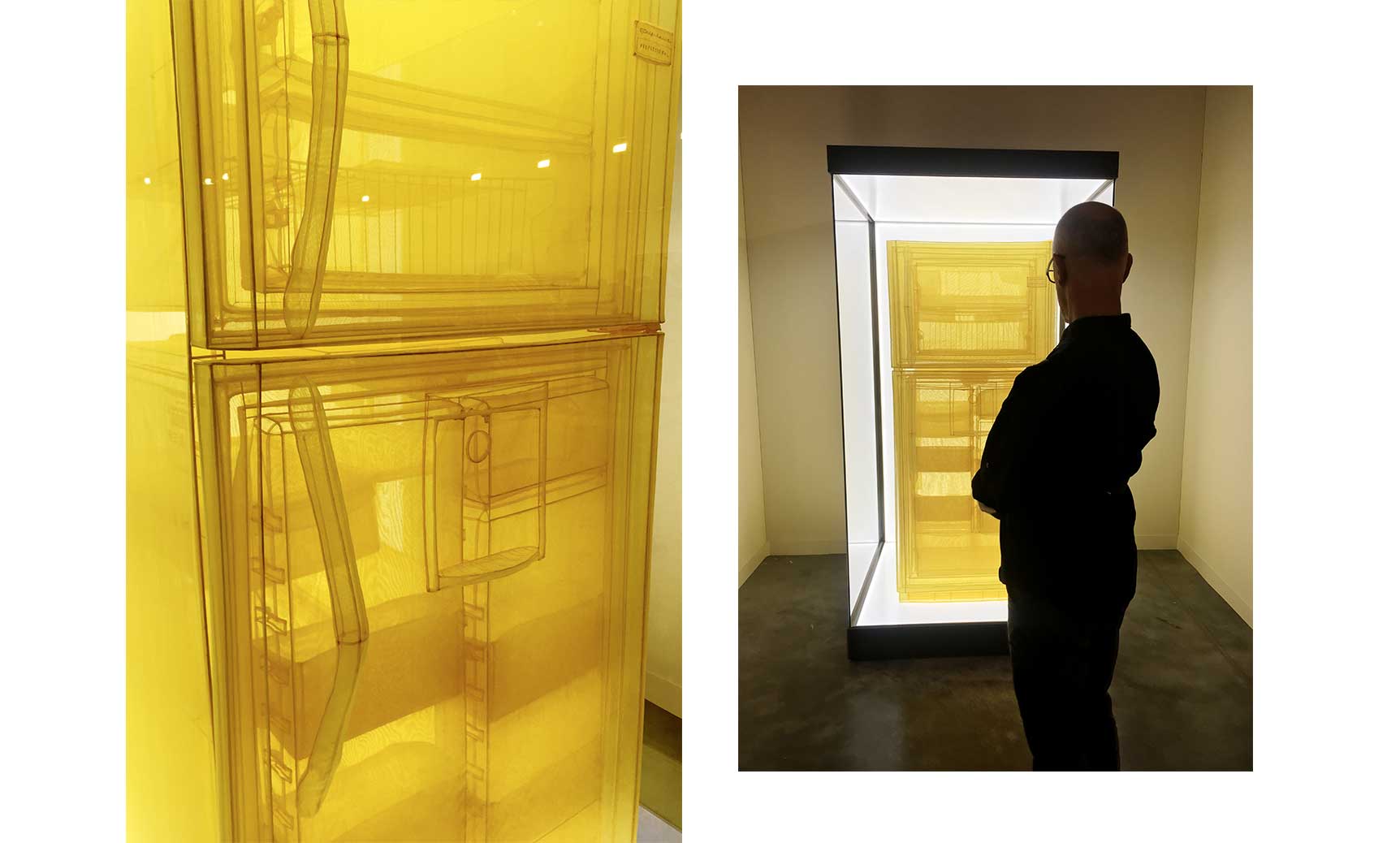
Home away from home: If you are home-sick recreate your home with fabric so you can fold it and take it with you. Suh is best known for his fabric sculptures that reconstruct to scale his former homes in Korea, Rhode Island, Berlin, London, and New York. By using translucent material, Suh captures the intangible quality of memory.

After previewing Basel, if you want to get away from the crowds, we recommend to go eat some crepes and drink some wine at La Follie Cafe. Here Paul feels right at home.
516 Española Way
Untitled Art Fair
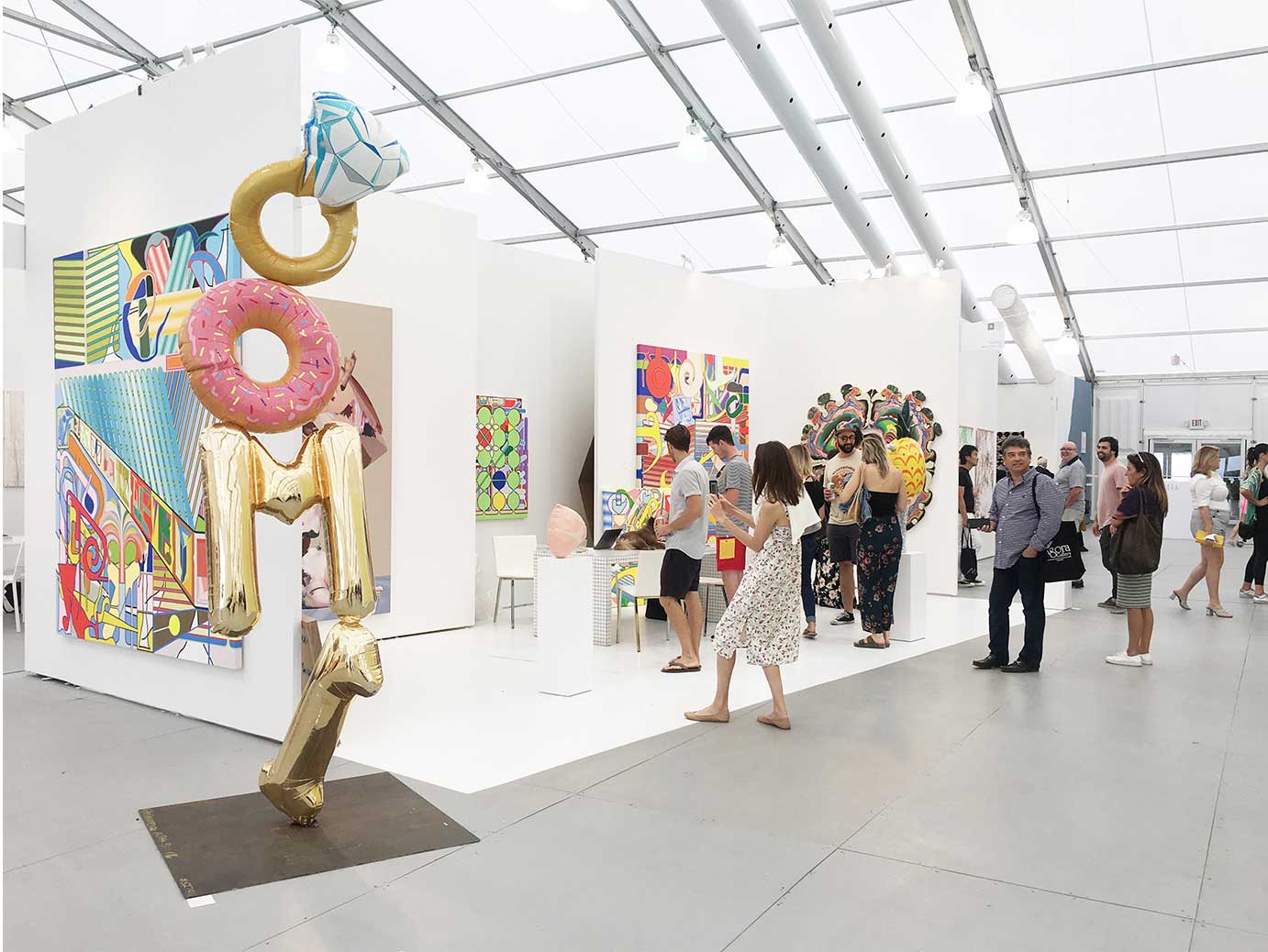
The Hole gallery booth embodies all what we love about Untitled Art Fair. Located on South Beach this fair is beautifully curated by Omar López-Chahoud, and is where we usually go to discover new talent and fresh perspectives.
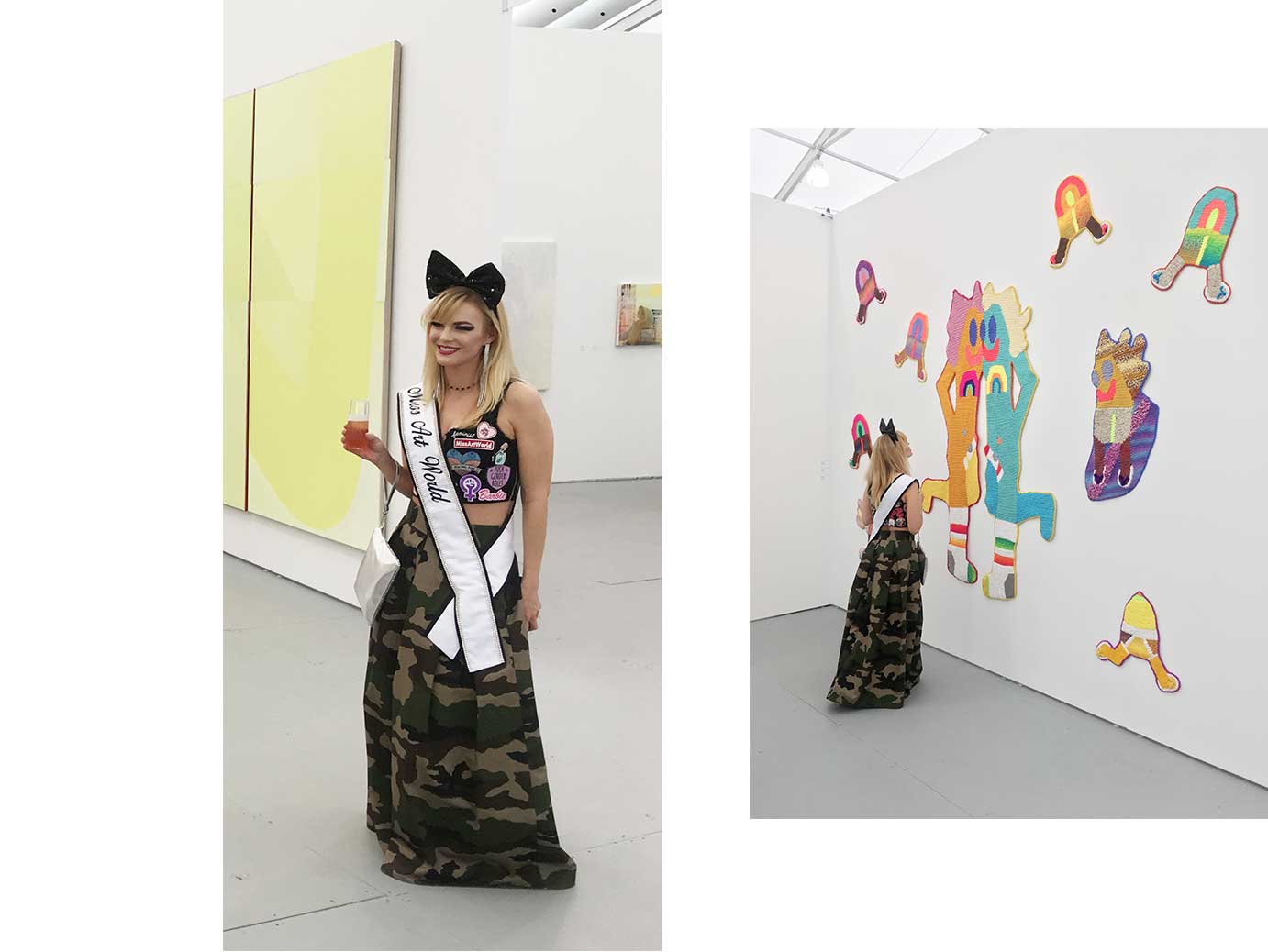
Self-appointed “Miss Art World” takes a look at Caroline Wells Chandler’s brightly colored hand-crocheted works. In this series Wells explores notions of queerness and sexuality as well as the art historical canon.
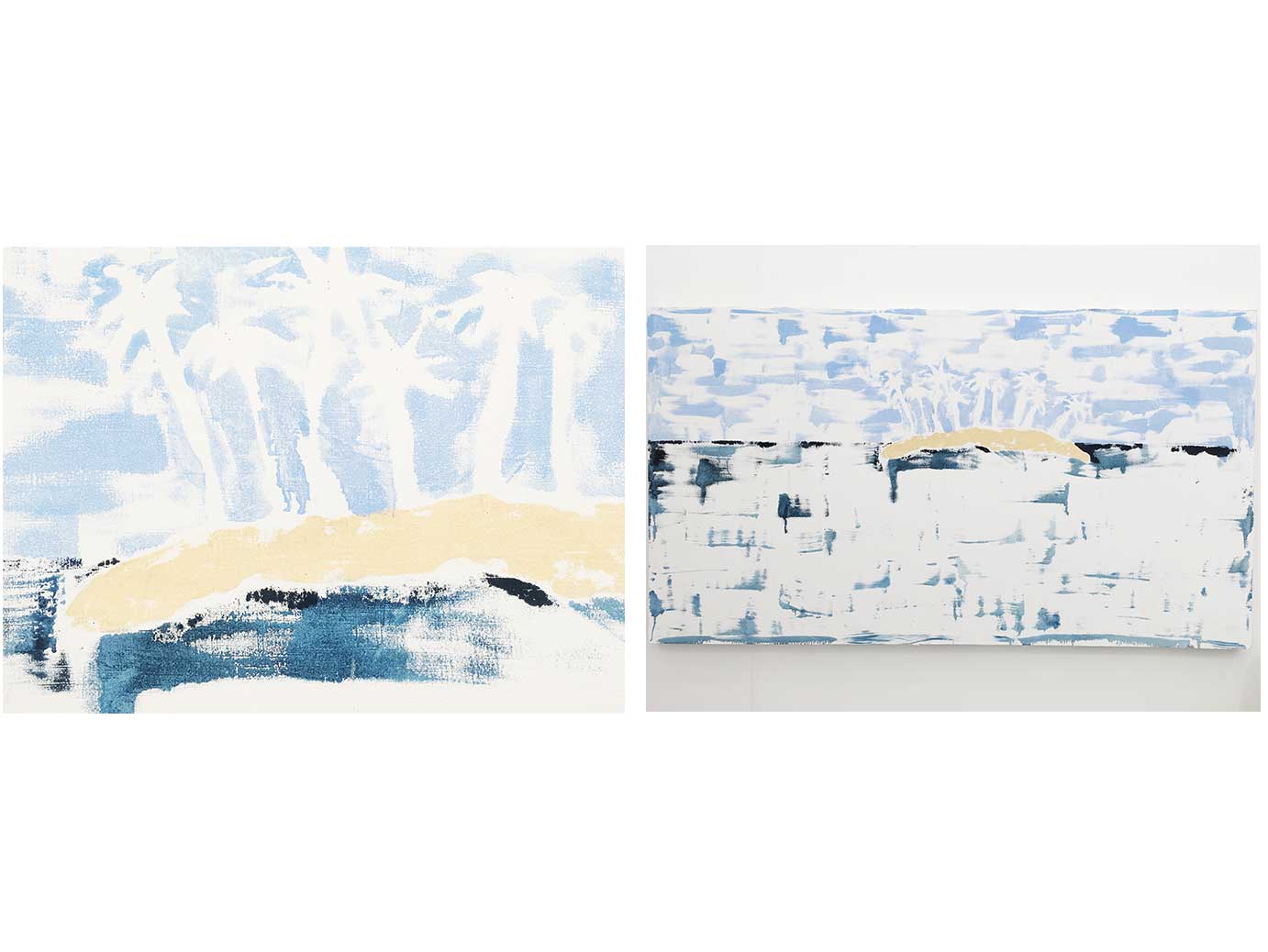
False Flag Gallery presented a solo show by Emilie Gossiaux, who became blind at the age of 19 after a bike accident and continued her practice sculpting and painting from memory.
“I use physical memories: how an object fits in the palm of my hand, its weight and texture, or its size in relation to my body.”
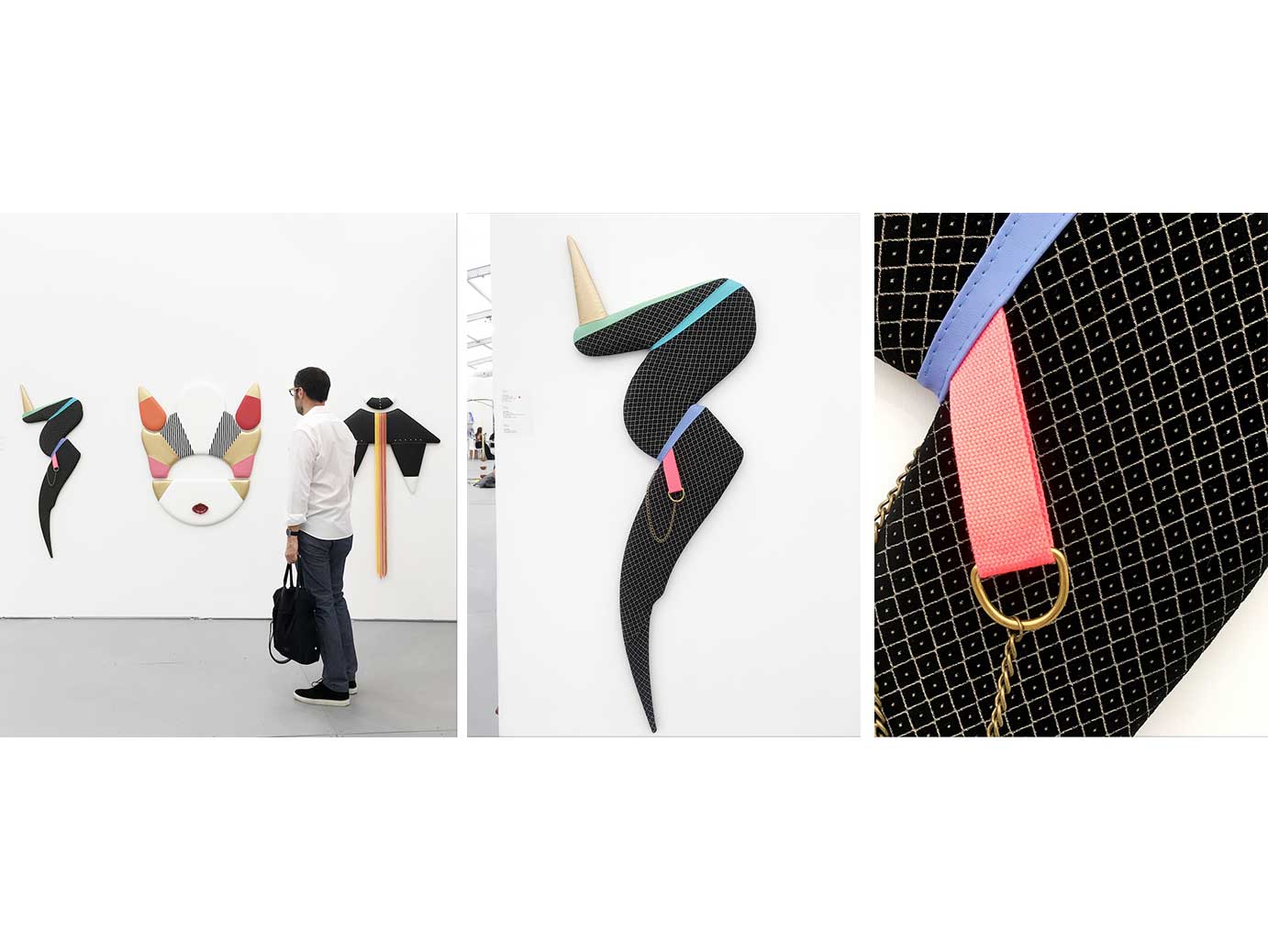
Asya Geisberg Gallery presented Trish Tilman’s sculptures made of industrial components fused with uncanny decorative elements to evoke domestic ritual, material fetishism, and a modern tendency towards private totemic monuments. Tillman’s sly echo of Minimalist sculptures mixes with Pop material and a Postmodern rejection of strict binaries of high/low, made/bought, and transformed/unadulterated.
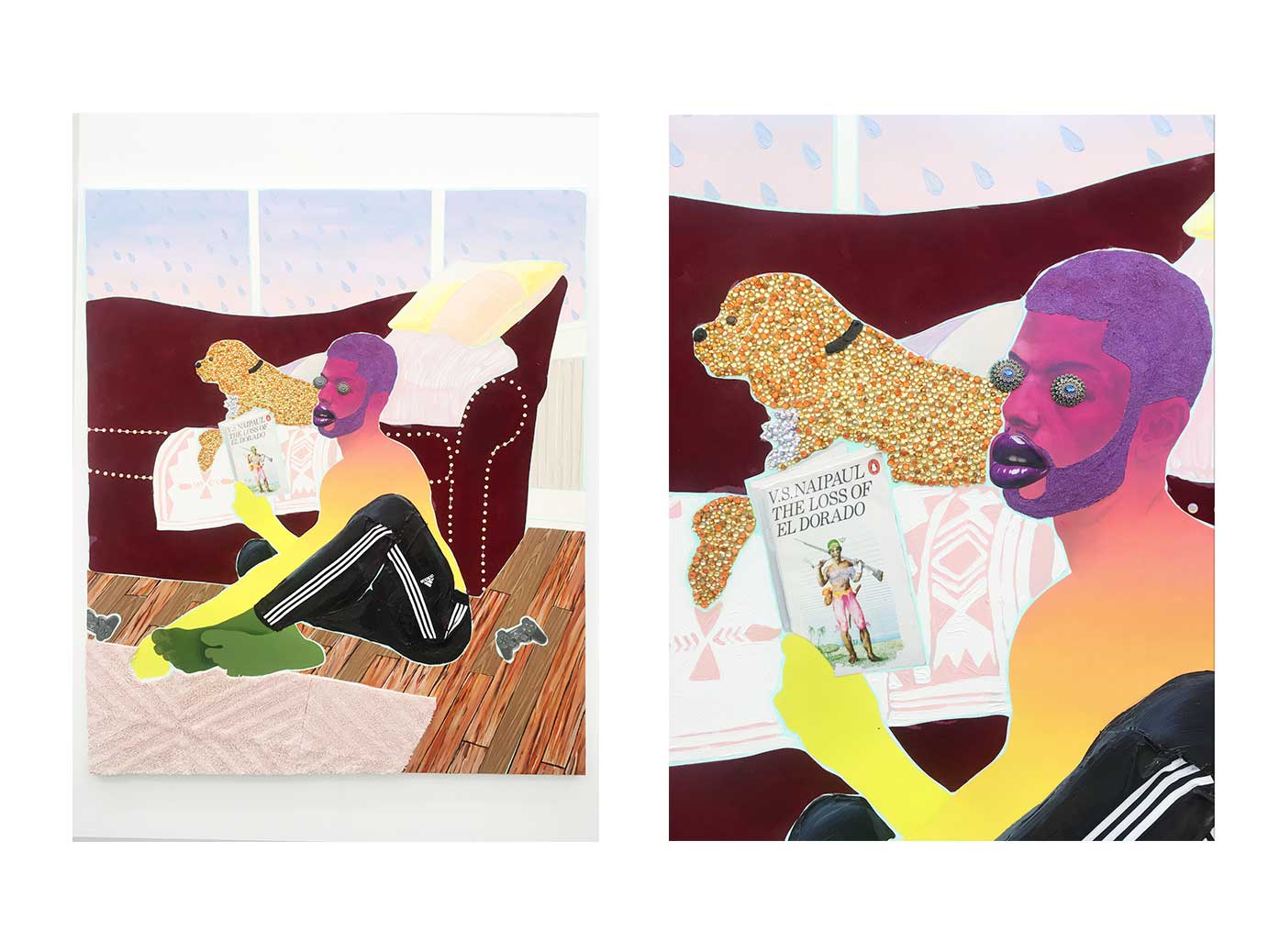
Devan Shimoyama seeks to depict the black queer male body as something that is both desirable and desirous. He explores the mystery and magic in the process of understanding his origins and also investigates the politics of queer culture. His work showcases the relationship between celebration and silence in queer culture and sexuality.
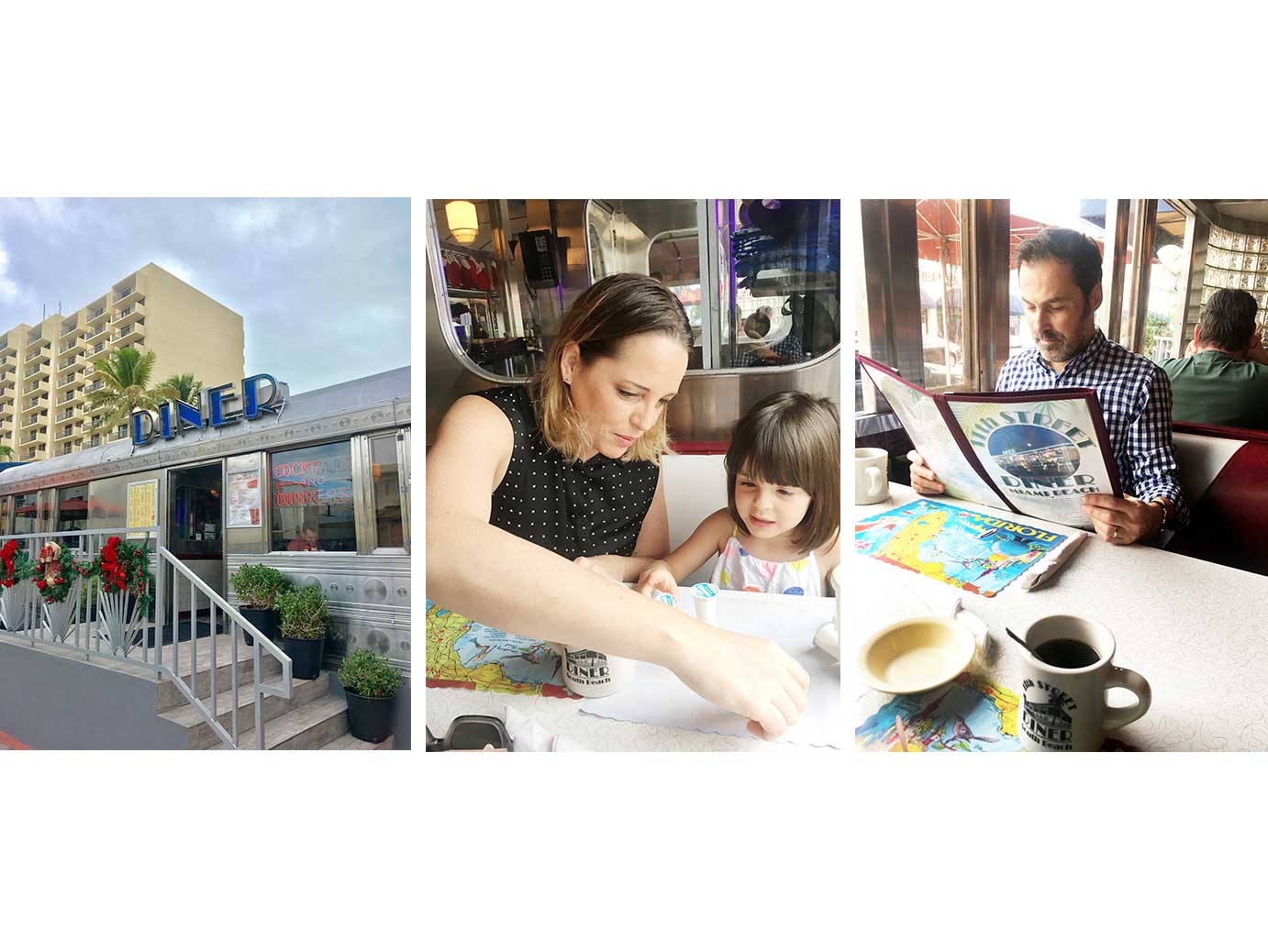
Built in 1948, this art deco diner is part our South Beach brunch experience.
Moore Building: Pop Minimalism / Minimalist Pop
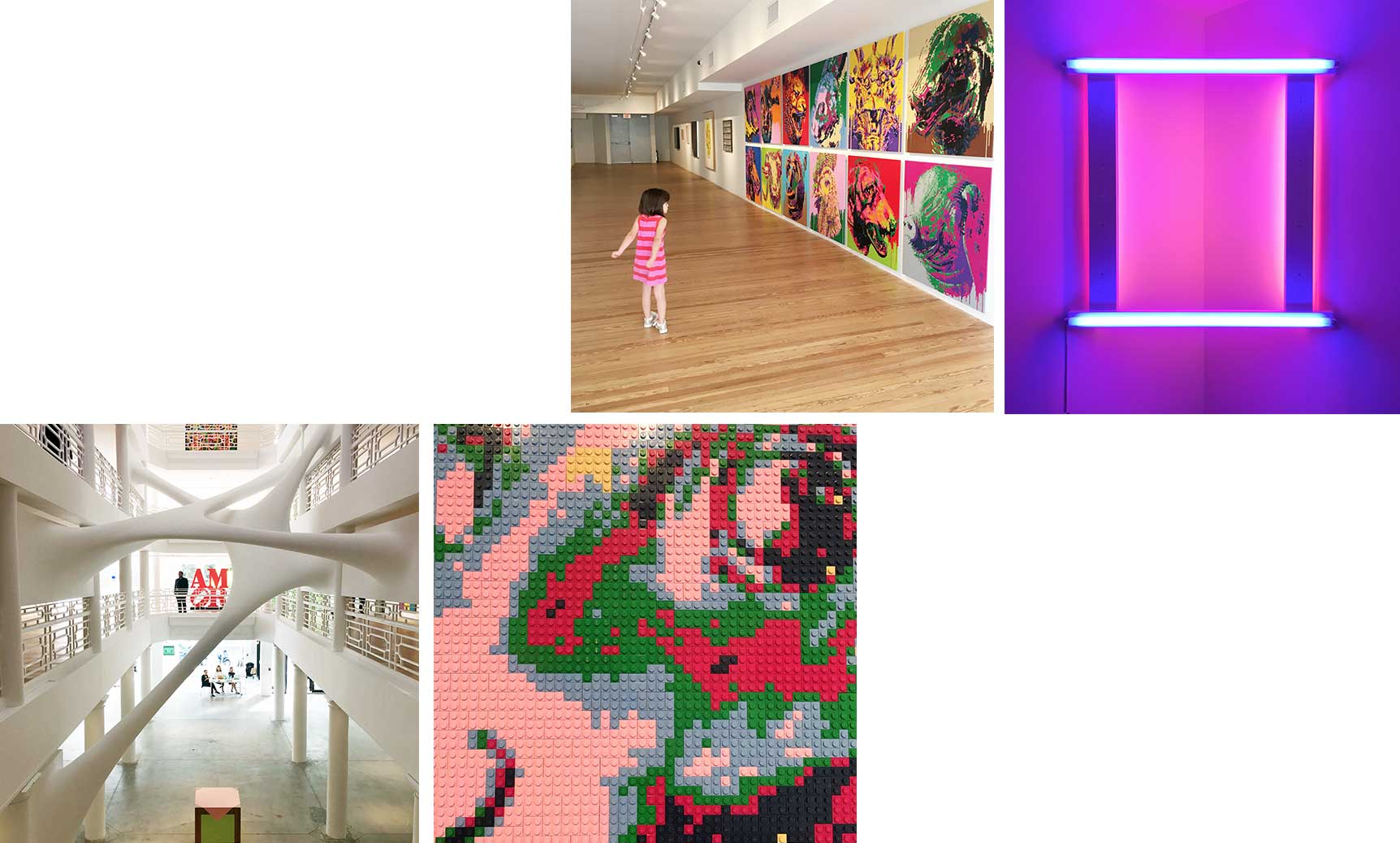
Gagosian and Jeffrey Deitch joined forces again and presented Pop Minimalism | Minimalist Pop, their fourth collaboration at the Moore Building in the Miami Design District. This group exhibition explored the intersections and legacies of two major American art movements of the 1960s—Pop art and Minimalism—and the ways in which features of Minimalism have been incorporated into a variety of contemporary art practices. As a bonus, you get to see, Zaha Hadid’s Elastika . A site-specific installation, which aims to mutate the historical Moore building built in 1921.
Left to right: Philip Taaffe, Dan Flavin, Ai Wei Wei.
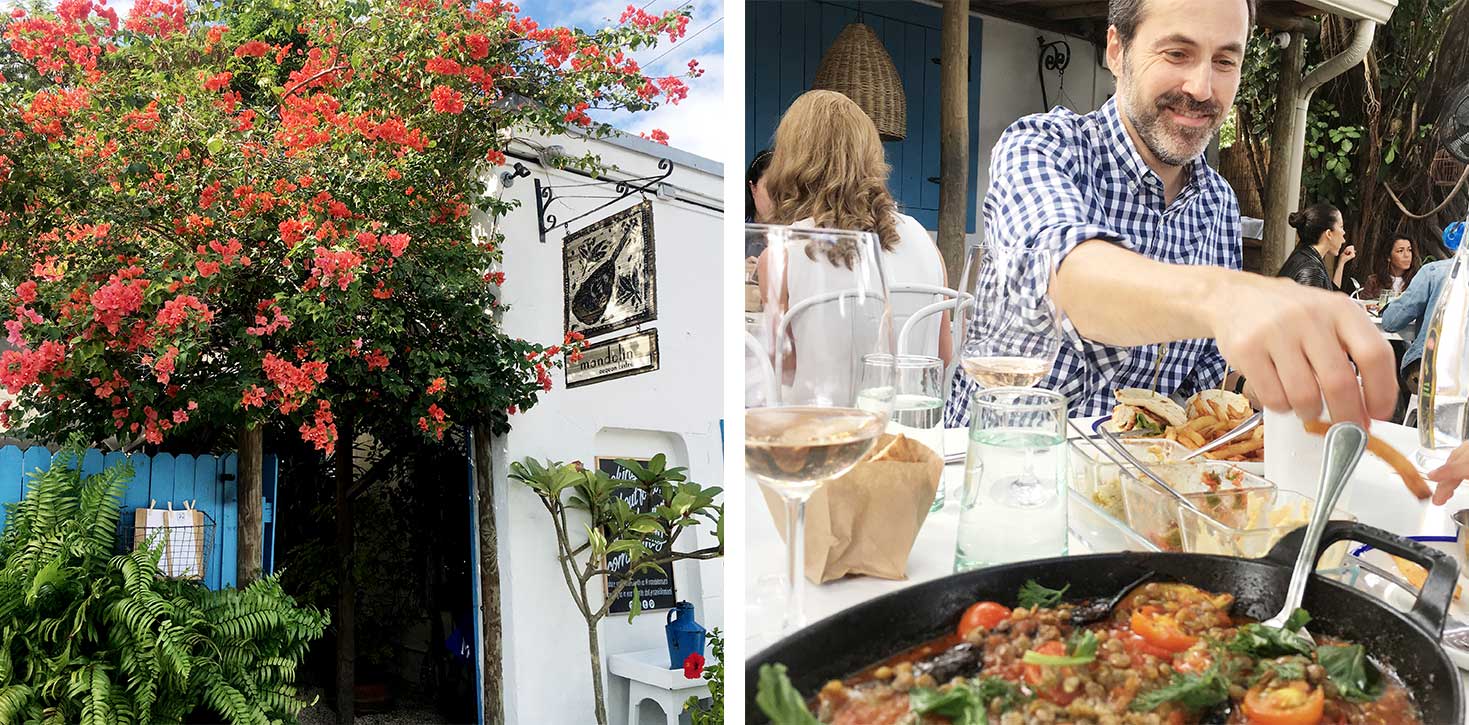
We recommend Mandolin Aegean Bistro a few blocks away from the Moore Building. This 1930’s era house, features a beautiful patio and great vegetarian options.
4312 NE 2nd Ave.
Bass Museum presents Paola Pivi, Aaron Curry and the Haas Brothers
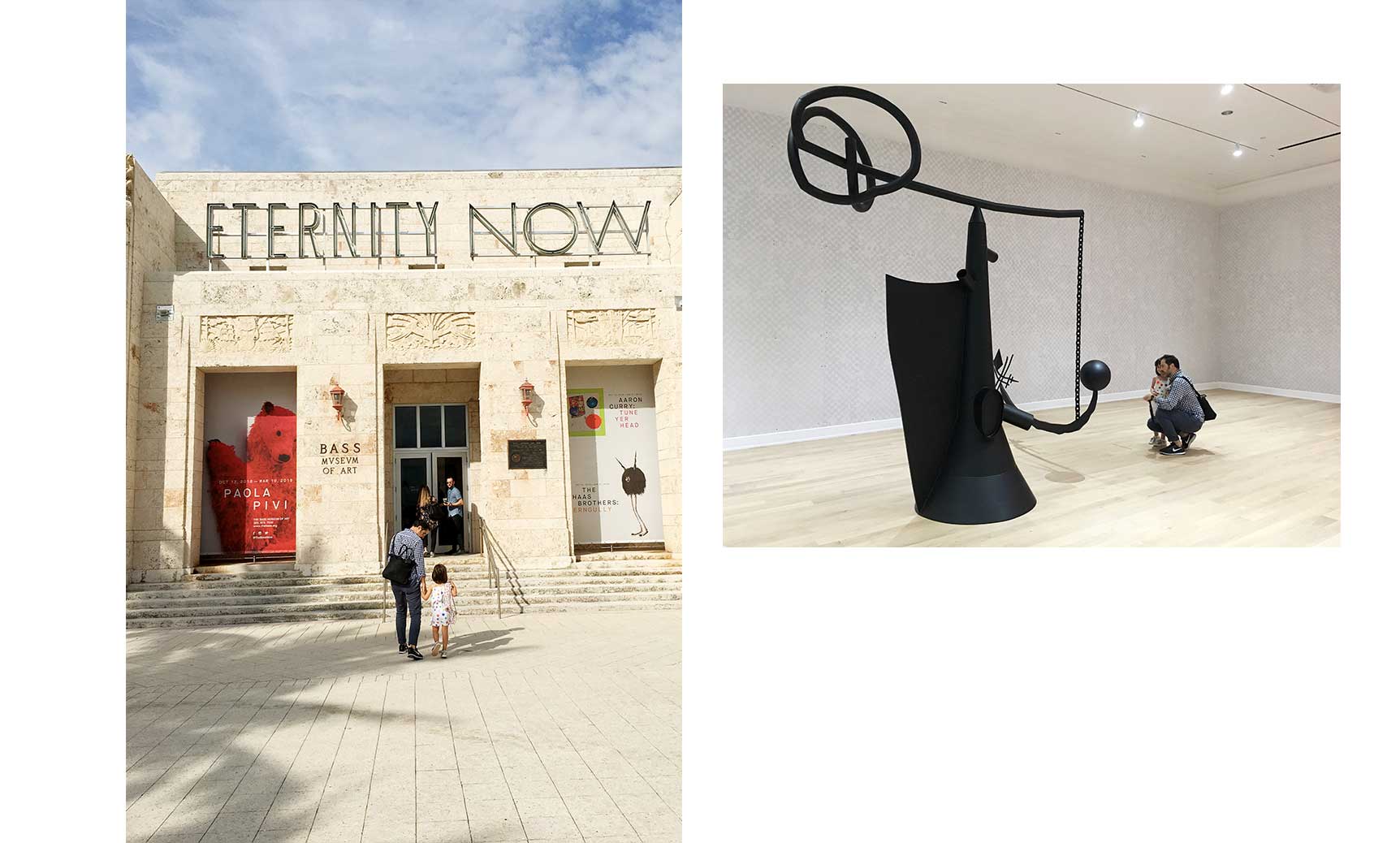
The Bass Museum, located in Collins park, focuses on exhibitions of international contemporary art.
Paul getting new a perspective on Aaron Curry’s sculpture through or daughters point of view. While we clearly see Picasso, Picabia and Calder’s influence on Aarons work, Alia sees a crane, a hook, a pencil and a little fin.
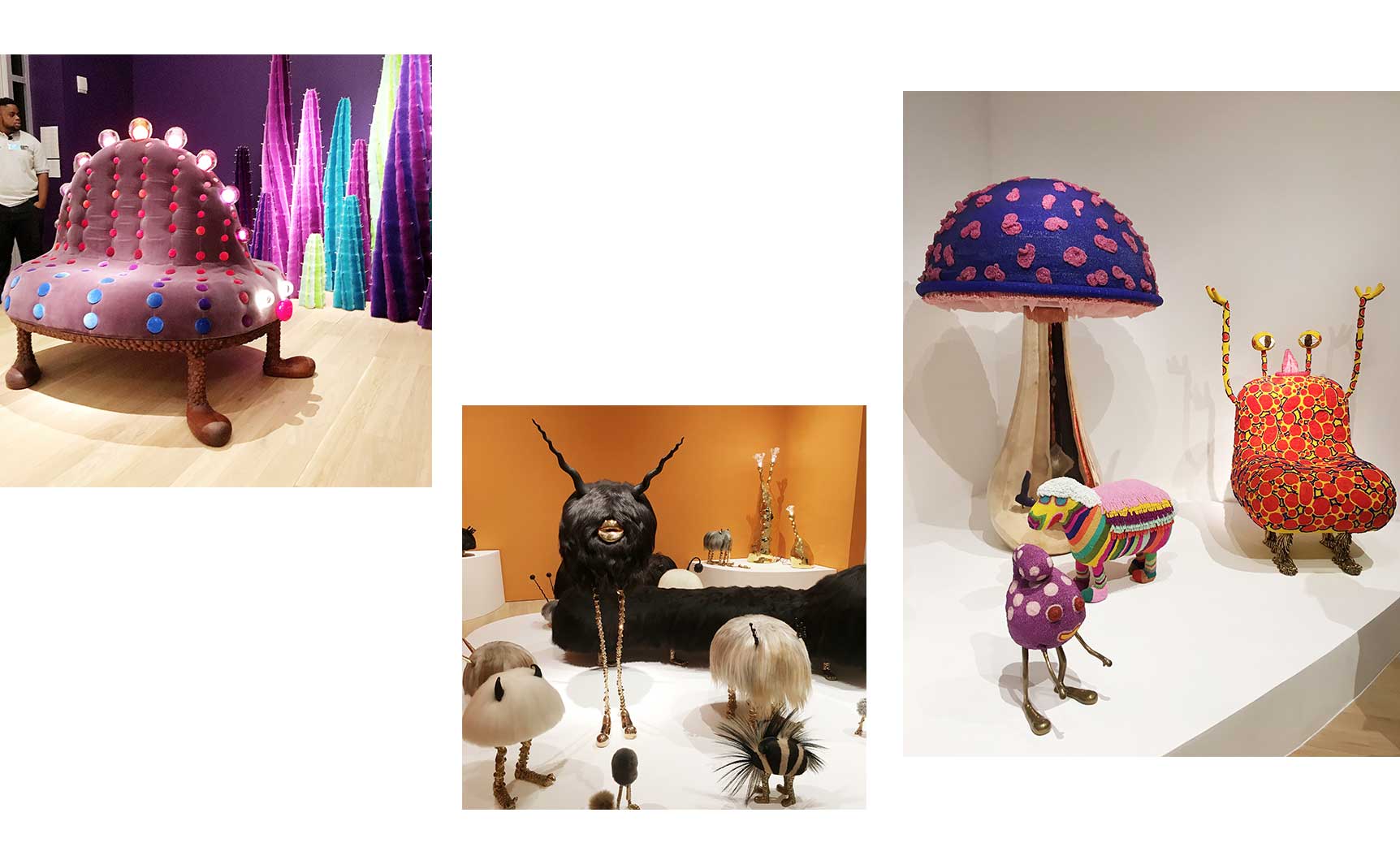
The strange and fantastic world of the Haas brothers always makes us smile. Their works of art and objects are situated between the contexts of art and design, frequently departing from the functional, and moving towards the exclusively sculptural.
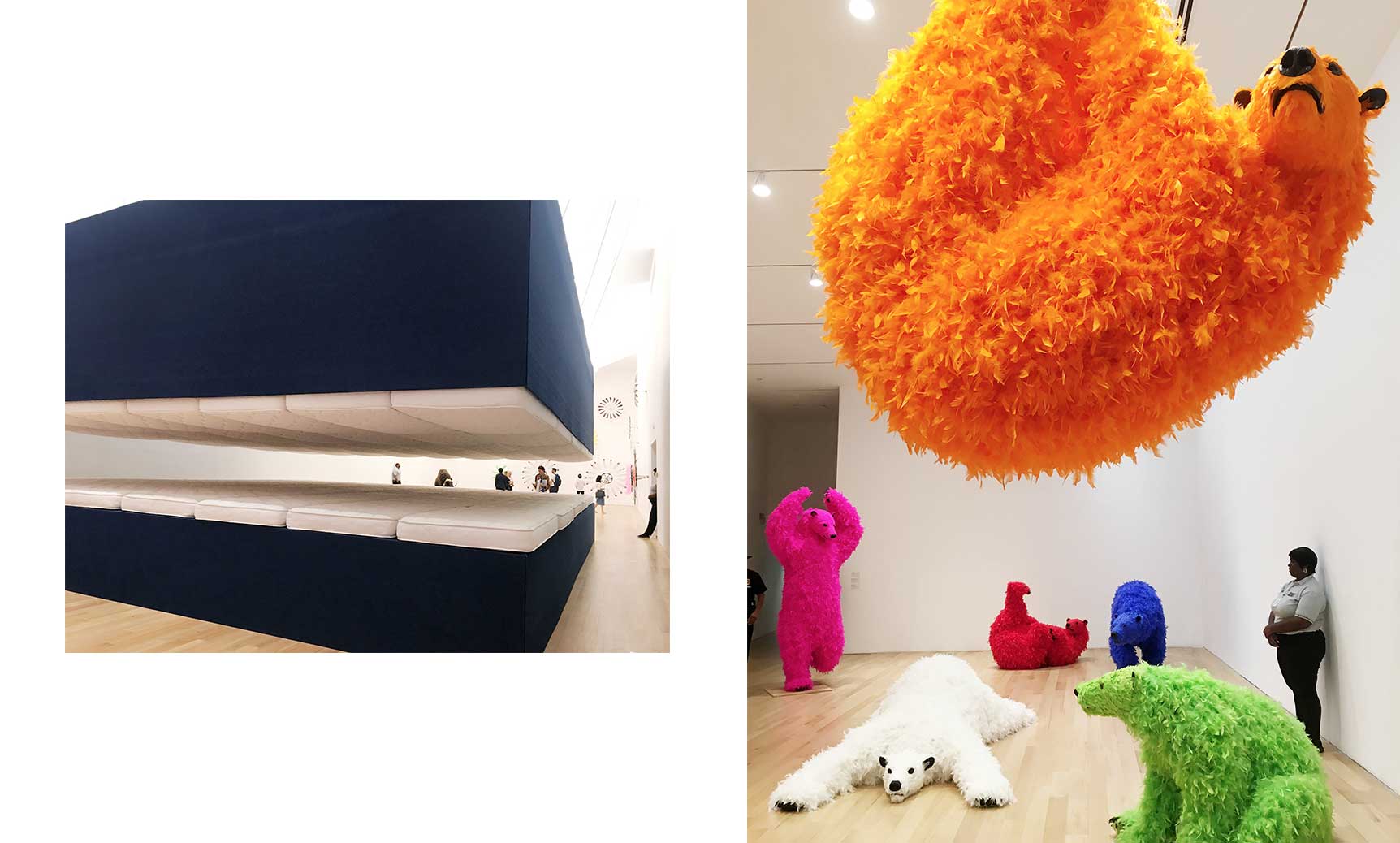
Paola Pivi’s enigmatic yet somehow familiar body of work, is open to interpretation through your own experience.

Miami’s best secret: Mister 0-1 pizza is hidden inside this building fairly close to the Bass Museum. No signs, just mention Mister 0-1and this women will let you in. This is by far the best pizza we have eaten, and we live in New York.
Text and images courtesy of Paul Vinet & Pilar Zimmermann
Share this Story
More Culture
“Becoming Familiar” Is The Experience To See and Touch at Design Miami 2023
LA Based Raise the Moral Studio Sensory Art Objects Win Best Curio Presentation at Design Miami 2023
tell me more ›Helping Hands for Morocco
How to support from afar those making a difference on the ground
tell me more ›Ian Schrager & AHL Founder Ben Pundole Open 10th Annual L.E. Miami
The legendary hospitality impresario in conversation with his long time magic maker (and A Hotel Life founder) on the past, present and future of hotels
tell me more ›Sunken Harbor Club Opens Its Vacation Station in Bermuda
Reimagined as a part of Cambridge Beaches’ centennial renewal, the Brooklyn favorite brings its signature cocktails to a side of island fare
tell me more ›
